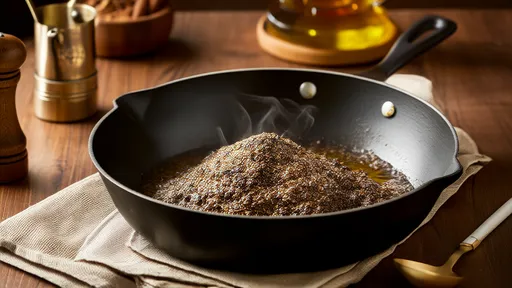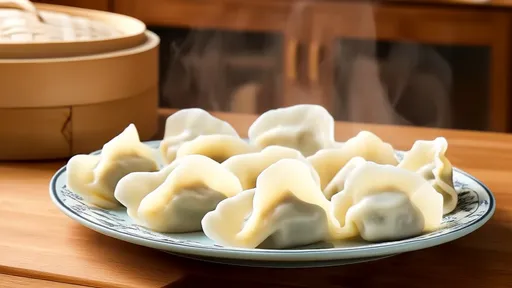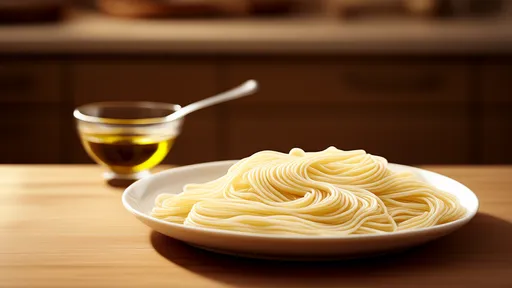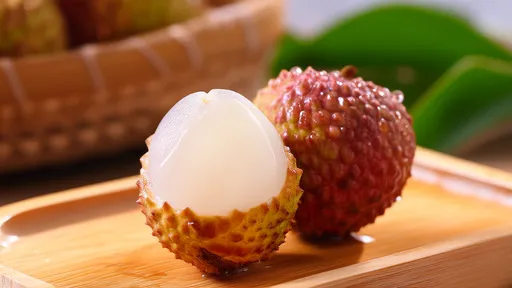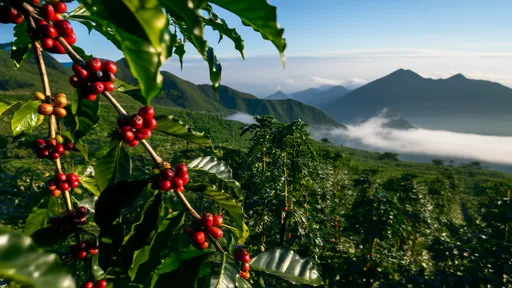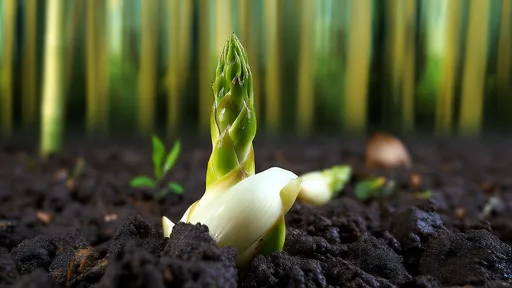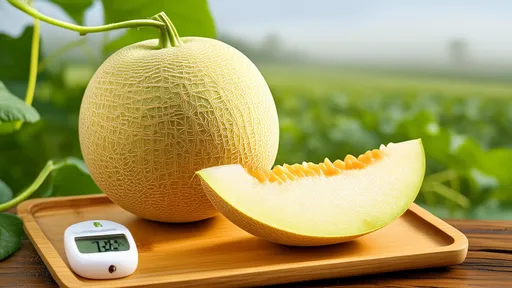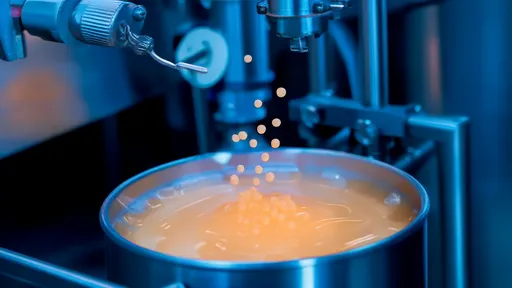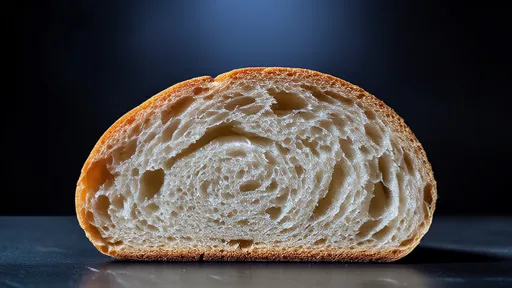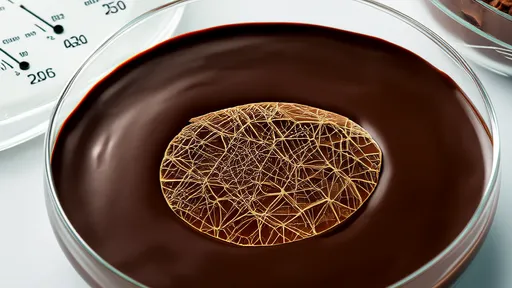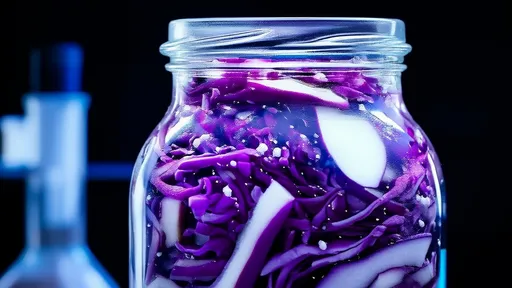The art of unlocking the full potential of spices lies in a time-honored technique: dry-roasting, crushing, and coaxing out their essential oils. This ancient method, passed down through generations of culinary masters, transforms ordinary spices into aromatic powerhouses that elevate dishes to extraordinary heights. The process may seem simple at first glance, but mastering it requires patience, precision, and an understanding of how heat interacts with different spice varieties.
When spices meet a dry, heated surface, magic begins to happen. The gentle application of heat causes moisture to evaporate, concentrating the flavors within each seed, pod, or bark. As the temperature rises, complex chemical reactions occur - starches convert to sugars, proteins break down into savory amino acids, and volatile compounds begin their dance toward liberation. This alchemy creates flavors far more nuanced than what pre-ground spices can offer, with depth that lingers on the palate long after the meal has ended.
The choice of cooking vessel plays a crucial role in this transformative process. Traditional cast iron pans, with their excellent heat retention and even distribution, have long been the preferred tool for dry-roasting spices. The heavy bottom prevents scorching while maintaining consistent temperature, allowing the spices to toast rather than burn. Some chefs swear by thick clay pots, which impart a subtle earthiness to the spices, while others prefer carbon steel woks for their quick heat response and ability to handle high temperatures.
Timing proves everything when coaxing essential oils from their botanical prisons. Cumin seeds might need just ninety seconds of toasting before their earthy perfume fills the kitchen, while tougher spices like black peppercorns demand closer to three minutes. The visual cues are unmistakable - spices darken slightly, some may pop or jump in the pan, and their aroma intensifies dramatically. This is the moment when their essential oils become most volatile, ready to be captured at their peak.
The crushing stage that follows roasting serves multiple purposes. By breaking down the spice's cellular structure, we release trapped essential oils that would otherwise remain locked away. The size of the grind matters immensely - too fine and the volatile compounds evaporate too quickly; too coarse and the flavors won't properly infuse into dishes. Many traditional cooks still use stone mortars and pestles for this task, believing the slow, rhythmic grinding preserves more nuance than electric grinders which can generate heat and alter flavors.
Different spice families require tailored approaches during this process. Delicate seeds like coriander benefit from gentle roasting at lower temperatures, while hardy roots such as turmeric can withstand more aggressive heat. Whole spices containing protective outer layers - think cardamom pods or allspice berries - often need longer roasting times to penetrate their defenses. Understanding these variations separates competent cooks from true spice artisans.
The applications of freshly roasted and ground spices extend far beyond simple seasoning. In Indian cuisine, this technique forms the foundation of garam masala, where individually roasted spices combine to create something greater than the sum of its parts. Mexican moles rely on carefully charred chilies and toasted seeds for their characteristic depth. Even European spice blends like quatre épices demand this careful treatment to achieve their proper balance.
Modern science has begun to quantify what traditional cooks have known instinctively. Gas chromatography studies show that dry-roasted spices contain significantly higher levels of key aromatic compounds compared to their raw counterparts. The Maillard reactions and pyrolysis that occur during roasting create entirely new flavor molecules that don't exist in untreated spices. This explains why dishes prepared with freshly processed spices taste fundamentally different - they quite literally contain different chemical compositions.
Storing these freshly awakened spices presents its own challenges. The same volatile compounds that create incredible aromas also make the spices more susceptible to oxidation and flavor loss. Airtight containers in cool, dark environments become essential, with many experts recommending using the spices within two weeks for optimal flavor. Some traditional cultures take this further, storing freshly ground spices in small clay pots buried in the earth to maintain consistent temperature and humidity.
The sensory experience of working with freshly roasted spices transcends mere cooking. The crackling sounds as seeds hit the hot pan, the evolving aromas that shift from grassy to nutty to deeply complex, the changing colors that signal perfect doness - these multisensory cues create a connection between cook and ingredient that pre-packaged spices can never replicate. This ritualistic aspect explains why many chefs consider spice preparation a meditative practice rather than just a kitchen task.
Regional variations on this technique reveal cultural adaptations to local ingredients and cooking styles. In Ethiopia, spices are often roasted with small amounts of oil to create awaze paste. Thai cooks might include fresh aromatics like lemongrass or galangal during the roasting process. The Berbers of North Africa traditionally roast spices in sand to ensure even heating without burning. Each adaptation demonstrates how fundamental this technique is to global culinary traditions.
Contemporary chefs continue pushing the boundaries of this ancient practice. Some experiment with controlled low-temperature roasting over several hours to develop unprecedented depth. Others combine traditionally separate roasting stages, creating complex flavor profiles in single processes. A few avant-garde kitchens even use vacuum roasting to preserve particularly delicate aromatics. Yet despite these innovations, the core principles remain unchanged - respect the spice's nature, apply heat judiciously, and capture the essence at its peak.
For home cooks looking to explore this technique, starting with single spices rather than complex blends allows for better understanding of individual characteristics. Cumin, coriander, and fennel seeds make excellent beginner projects, showing clear transformation signs and forgiving somewhat inconsistent heat. Keeping detailed notes on timing, temperature, and sensory observations helps build intuition over time. Many discover that returning to whole spices and this traditional preparation method rekindles their passion for cooking in profound ways.
The environmental impact of this approach shouldn't be overlooked. Buying whole spices in bulk rather than pre-ground reduces packaging waste significantly. Properly stored whole spices maintain quality for years rather than months, decreasing food waste. The enhanced flavor potency means smaller quantities are needed in cooking, stretching precious resources further. In an era of increasing ecological awareness, these small but cumulative benefits gain importance.
Nutritional considerations add another layer of value to the practice. Recent studies suggest that certain bioactive compounds in spices become more bioavailable after roasting. The antioxidant capacity of some spices actually increases with proper heat treatment. While spices are typically consumed in small quantities, every bit of enhanced nutritional benefit contributes to overall dietary quality.
Beyond professional kitchens, this technique finds applications in herbal medicine, perfumery, and even some industrial processes. The same principles that unlock culinary flavors also release therapeutic compounds in medicinal herbs. Perfumers have adapted similar methods for extracting fragile floral absolutes. This cross-disciplinary utility speaks to the fundamental nature of the technique - it's not just cooking, but rather working in harmony with botanical materials at their most essential level.
As global spice trade continues expanding, keeping these traditional techniques alive becomes both cultural preservation and culinary advancement. In a world of instant gratification, the slow, deliberate process of dry-roasting and grinding spices offers a counterbalance - a reminder that some things cannot be rushed, that true flavor demands respect and patience. Perhaps this explains why, despite all our technological advancements, the oldest methods still produce the most extraordinary results.
The art of unlocking the full potential of spices lies in a time-honored technique: dry-roasting, crushing, and coaxing out their essential oils. This ancient method, passed down through generations of culinary masters, transforms ordinary spices into aromatic powerhouses that elevate dishes to extraordinary heights. The process may seem simple at first glance, but mastering it requires patience, precision, and an understanding of how heat interacts with different spice varieties.
For many home cooks and professional chefs, peeling and cutting yams can be an unexpectedly unpleasant experience. The vegetable, known for its nutritional benefits and culinary versatility, has a notorious side effect – it can leave your hands unbearably itchy. This common kitchen woe has led to numerous home remedies and old wives' tales, but one surprising solution has emerged from modern technology: the microwave.
The art of making dumplings is a cherished tradition in many cultures, particularly in Chinese cuisine. While the filling often steals the spotlight, the dough wrapper plays an equally crucial role in ensuring the dumplings hold together during cooking. One of the most effective yet underrated techniques for preventing dumpling wrappers from tearing is incorporating egg whites into the dough. This method leverages the science of proteins to create a more resilient and elastic wrapper, capable of withstanding the rigors of boiling or steaming without falling apart.
In kitchens around the world, cooks face a common nemesis when preparing pasta: sticky noodles that clump together into an unappetizing mass. While many swear by the traditional method of rinsing cooked pasta with cold water to prevent sticking, a growing number of culinary experts argue that tossing freshly boiled noodles with olive oil proves far more effective. This technique not only preserves the pasta's ideal texture but also enhances its flavor profile in ways cold water simply cannot match.
Guangdong lychee, a jewel of southern China's fruit basket, has long been celebrated for its succulent flesh and floral aroma. Beyond its irresistible taste, recent research has uncovered a hidden treasure within its vibrant red peel—polyphenols with remarkable antioxidant properties. These compounds are quietly revolutionizing our understanding of how this tropical fruit may contribute to human health far beyond basic nutrition.
The high-altitude coffee farms of Yunnan Province have long been celebrated for producing beans with a distinctive flavor profile. Among the many factors influencing taste, altitude plays a particularly crucial role, especially when it comes to acidity. Unlike the bright, sharp acidity often associated with African coffees, Yunnan’s beans exhibit a more nuanced relationship between elevation and tartness—one that defies simple expectations.
The tender crunch of Zhejiang bamboo shoots has long captivated gourmets and scientists alike, their delicate texture standing as a testament to nature's perfect engineering. While chefs praise their culinary versatility, researchers have uncovered a fascinating cellular secret behind their remarkable freshness – turgor pressure. This biological phenomenon, often overlooked in discussions of vegetable quality, holds the key to understanding why these spring delicacies from China's eastern province maintain their youthful crispness long after harvest.
The Hami melon, a jewel of Xinjiang's agricultural bounty, owes its legendary sweetness to a climatic phenomenon as ancient as the Silk Road itself. Nestled in the arid embrace of China's northwest, this golden-fleshed fruit has thrived for centuries under skies that scorch by day and chill by night. What appears as hardship to most crops becomes the secret alchemy transforming ordinary melons into saccharine masterpieces.
The vast fields of Northeast China, stretching across latitudes from 40°N to 50°N, have long been celebrated as the heartland of soybean production. Among the many factors influencing soybean quality, protein content stands out as a critical metric, not just for nutritional value but also for industrial applications. Recent studies have unveiled a fascinating pattern: the protein content in Northeast soybeans exhibits significant variation along latitudinal gradients. This discovery has sparked renewed interest in understanding how geography shapes the very fabric of this agricultural staple.
The process of homogenization in ice cream mix preparation plays a pivotal role in achieving the desired texture, stability, and mouthfeel of the final product. At the heart of this process lies the principle of fat emulsification, where milk fat globules are broken down into smaller, more uniform particles. This not only enhances the emulsion's stability but also ensures a smoother consistency in the ice cream. The science behind homogenization parameters is both intricate and fascinating, as it directly influences the quality of the end product.
The phenomenon of bread staling has puzzled bakers and food scientists for generations. While most consumers associate staleness with dryness, the underlying mechanisms involve complex interactions between starch retrogradation and water migration within the bread matrix. This intricate dance between moisture and crystalline structures ultimately determines whether your morning toast will delight or disappoint.
The formation of rock sugar crystals is a fascinating interplay of chemistry and physics, where the delicate balance of supersaturation dictates the birth and growth of crystalline structures. At its core, this process hinges on the creation of nucleation sites—tiny clusters of molecules that serve as the foundation for larger crystals. The journey from syrup to shimmering rock sugar is anything but straightforward, and understanding the factors that influence nucleation can unlock greater control over crystal size, clarity, and yield.
The art of chocolate tempering is a delicate dance of temperature control, one that hinges on the precise crystallization of cocoa butter. This process is not merely a technical step in chocolate production; it is the very heart of what gives chocolate its signature snap, glossy sheen, and melt-in-the-mouth texture. Without proper tempering, chocolate can appear dull, develop a grainy texture, or fail to release cleanly from molds. The secret lies in understanding how cocoa butter behaves under varying thermal conditions.
The science behind pickling vegetables has fascinated food chemists and home cooks alike for centuries. While the process may seem straightforward – submerging vegetables in brine – the molecular dance occurring within each cell reveals a complex interplay of chemistry and physics. Recent advances in sodium ion detection techniques have allowed researchers to map the distribution of salt throughout pickled vegetables with unprecedented precision, shedding new light on this ancient preservation method.
The phenomenon of "wine legs" or "tears of wine" has captivated drinkers and scientists alike for centuries. When a glass of wine or spirit is swirled, droplets form on the inside of the glass, creating mesmerizing streaks that slowly trickle back down. This elegant display isn’t just a sign of a good drink—it’s a fascinating interplay of fluid dynamics, surface tension, and evaporation.
